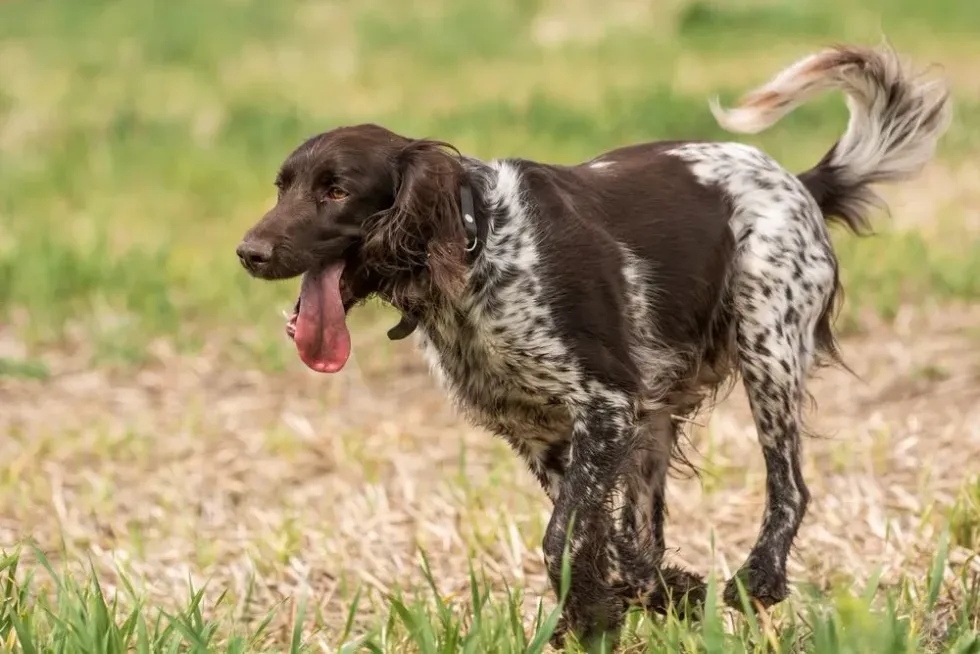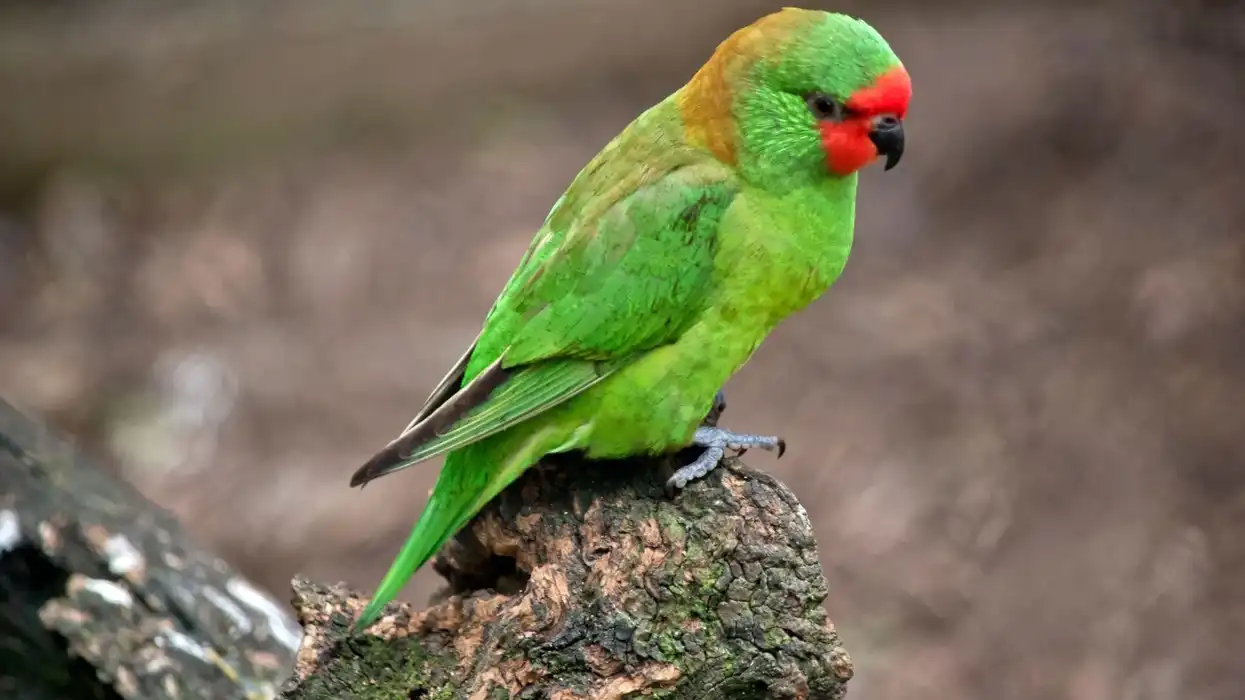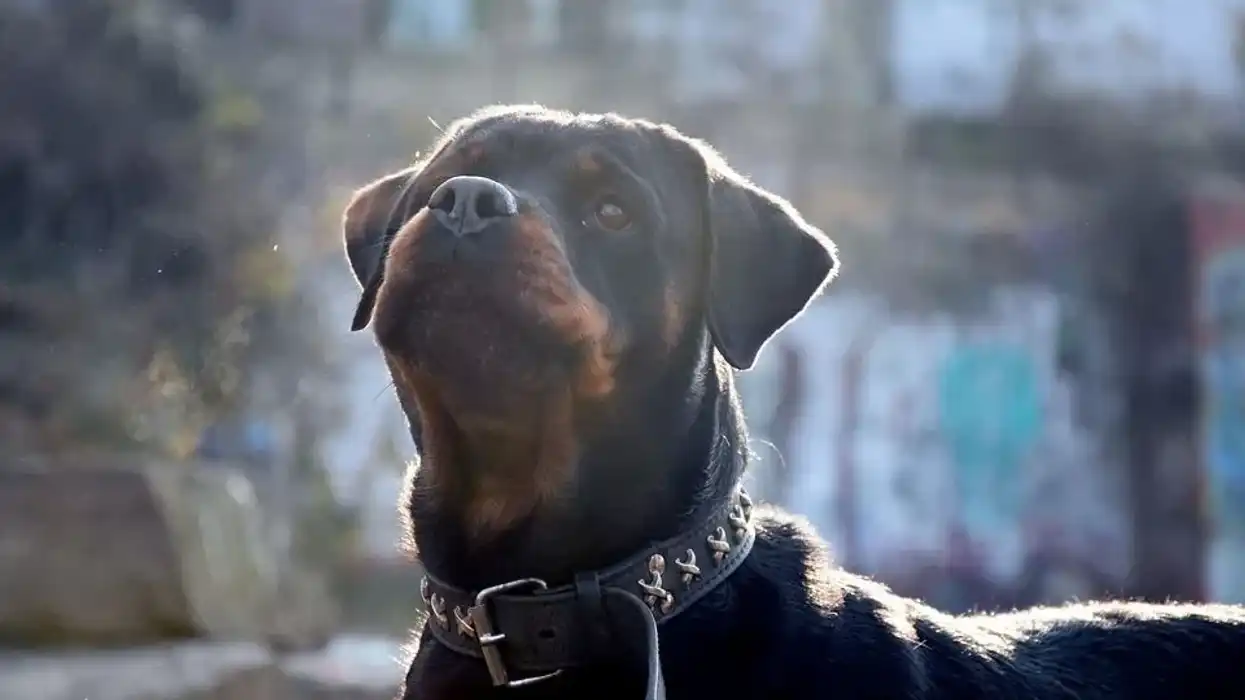The history of the breed can be traced back to the 19th century when these dogs were bred on the grounds of Germany. They are believed to be descendants of the German Spaniels or Wachtelhunds of Munsterland (from where they derived their names).
Originally bred to be a versatile hunting dog, the Small Munsterlanders could locate, fetch and retrieve all kinds of game with adeptness. They were equally dexterous in retrieving furry or feathery animals.
Contrary to what the name suggests, the Small Munsterlander Pointer, also popular as the Kleiner Münsterländer in Germany, is not essentially a small dog breed like the Chihuahuas or Shih Tzus. They have a pretty moderate size and body weight.
The cost of a Small Munsterlander puppy ranges from $1,200-$1,800 depending on the health, coat, availability, location, and gender of the puppy.
A brief idea of the dog's temperament, grooming, training, exercise, and medical needs must be taken into consideration before adoption. Adoptions must be made from ethical and responsible breeders.
Continue reading for some more exhilarating facts about the Small Munsterlander Pointer and if you want to indulge yourself by exploring some more pointer dog breeds then don't forget to take a look at some amazing facts on the pointer and German longhaired pointer.
Small Munsterlander Pointer Interesting Facts
What type of animal is a Small Munsterlander Pointer?
A Small Munsterlander Pointer is a hunting and sporting dog breed.
What class of animal does a Small Munsterlander Pointer belong to?
The Small Munsterlander Pointers belong to the class Mammalia.
How many Small Munsterlander Pointers are there in the world?
The number of dog breeds in existence needs to be unraveled as no conclusive statements can be made owing to the dearth of records. However, these dogs are fairly popular and widely available for adoption which reinstates the fact that they are pretty abundant worldwide.
Where does a Small Munsterlander Pointer live?
The dog breed can be found all over the world and are extremely popular in Europe, the USA, and the UK. They can be traced in multiple homes living comfortably with their masters and family.
What is a Small Munsterlander Pointer's habitat?
Currently, the dog mainly serves as a loyal family companion and can be found in cozy and comfortable home environments. Despite being purebred, these dogs can also be found in shelters and rescues. They are not an ideal choice for people living in a small apartment but for a spacious house, preferably with a backyard to play around.
Who do Small Munsterlander Pointers live with?
Previously, the dogs were used for sporting and retrieving the game by hunters so they returned and stayed with them at the end of the day. However, in the modern world, these dogs can be found living happily with their human counterparts. They are equally comfortable with children and other pets and can adjust well to outdoorsy families.
How long does a Small Munsterlander Pointer live?
When compared with the Large Munsterlander which enjoys a life span of up to 12 years, these dogs have a life expectancy of around 12-14 years. Needless to say that a healthy dog can even outlive the threshold of 14 years and live longer provided that they are entitled to proper facilities and care right from infancy.
How do they reproduce?
The breeding process of the Small Munsterlanders is very similar to that of all other dog breeds. However, the reproduction procedure must be conducted under the supervision of professional and knowledgeable breeders.
Mating can be conducted once a dog and bitch attain puberty. The bitches get their first heat cycle around six to eight months.
During this time they become highly receptive to sexual advances. However, the ideal time for mating must be determined before initiating the process.
Once the female conceives after successful copulation, it has to be showered with proper care as it goes through the gestation period lasting for 60-63 days. A healthy Small Munsterlander bitch normally gives birth to a litter of four to six puppies.
What is their conservation status?
The conservation status of the Small Munsterlander Pointer is Not Listed under the International Union for Conservation of Nature (IUCN) Red List perhaps due to the reason that the breed is pretty popular and widely available hence invulnerable.
Small Munsterlander Pointer Fun Facts
What do Small Munsterlander Pointers look like?
According to the breed standard, the Small Munsterlanders have a medium size and come in shades of brown and white and brown roan. The breed does not come in any solid colors. These dogs possess a thick and dense coat, expressive eyes, drooping ears, and a strong muzzle. They have well-developed sturdy bodies.
How cute are they?
Although the notion of cuteness is quite subjective, almost all dogs are considered to be cute and this versatile hunting dog is no exception. Especially, the puppies, with their small size and fluffy appearance, are more than just adorable.
How do they communicate?
Communication greatly depends on the dog's bonding with the human family. When there is a proper bonding between the two parties, interaction becomes a two-way process.
Dogs normally vocalize by barking, snarling, howling, growling, and whining. However, only the family members would be able to understand the significance of each type of bark.
For instance, a barking dog doesn't always imply anger or aggression.
A dog might bark loudly to raise an alarm in case it senses some impending danger in the vicinity while it can also express its happiness by barking.
Apart from these common vocalizations, the dogs are adept at using their body language and a variety of gestures to reciprocate their feelings and emotions which includes rubbing their head on your legs or even simple wagging of the tail.
How big is a Small Munsterlander Pointer?
The Kleiner Münsterländer stands at an approximate height of 20.5-22 in (52-56 cm) when measured from shoulder length. The males are slightly larger than the females standing at around 20-21 in (51-53 cm).
The dog breed is undisputedly smaller than the mastiffs and the Great Danes. However, when compared to the other hunting breeds like the beagle standing at a shoulder length of 13-15 in (33-38 cm) or the English springer spaniel at 19-20 in (48-51 cm), these dogs have a comparatively larger build.
How fast can a Small Munsterlander Pointer run?
The Small Munsterlander Pointers are capable of attaining an average speed of up to 25 mph (40 kph). The speed limit largely depends on the exercise and training that the dogs undergo.
How much does a Small Munsterlander Pointer weigh?
The average weight of the medium-sized breed ranges from about 40-60 lb (18-27 kg). The males are comparatively bulkier than their female counterparts.
What are the male and female names of the species?
The male member of the dog breed is usually called a dog while the female is regarded as a bitch.
What would you call a baby Small Munsterlander Pointer?
A baby Small Munsterlander Pointer is called a pup with adoration while it is generally referred to as a puppy.
What do they eat?
The Small Munsterlanders were reared for hunting purposes for which they require very high energy levels so their dietary requirements constitute healthy and highly nutritious food. The current trend is to offer pets good quality dog food available in the market.
However, it must be noted that these dogs need more than a selective range of food.
The diet must be wholesome comprising proteins, minerals, vitamins, essential fats, carbohydrates, omegas, zinc, and other necessary nutrients.
Ideally, a vet can suggest the best dietary options for the dog depending on its health, age, gender, and other specifications. Nevertheless, a puppy can be provided small meals three to four times daily while a grownup dog requires a more balanced diet two times a day.
A variety of food like vegetables, fruits, fish, raw meat (turkey, beef, or chicken), and soft bones can be fed to the dogs to ensure a healthy lifestyle. Some fruits and vegetables are toxic for consumption and must be avoided at all costs.
Additionally, fresh drinking water must always be kept at hand so that the dogs are adequately hydrated.
Are they slobbery?
If you hate slobber marks on your clothes or carpets then this breed is the right one for you as the Small Munsterlanders have very low drooling tendencies.
Would they make a good pet?
The renowned hunting dog in Europe is an obedient, intelligent, and lovable dog breed that can prove to be the best four-legged furry family companion.
They are pally with children as well as with other pets given that they are introduced to proper social training regimes right from infancy. Exercise and mental training are essential for the dogs to understand the requirements of the family and society.
However, these dogs have strong pointing instincts and inherent prey drive which implies that they must always be kept under vigilance in front of small children or other household pets.
These dogs have moderate grooming requirements. Since they shed occasionally and are not known to be heavy shedders, a bath once or twice a month accompanied by frequent brushing would help to maintain the quality of the coat.
Other grooming requirements include regular cleaning of the ears followed by eye checkups, trimming of the nails, and dental care.
Since these dogs have a high energy level, they need compulsory daily exercise and training for at least thirty minutes. A routine exercise and training regimen would ensure the better health of the dog.
The Small Munsterlander Pointer is an otherwise healthy dog breed with minor health concerns. The health issues that are common to this breed include hip dysplasia, ear infections, and skin problems.
Among all the health issues, hip dysplasia is the most severe, and in case a dog develops hip dysplasia, it needs to be taken into immediate healthcare checkups and administered proper medications.
Did you know...
The United Kennel Club (UKC) had rendered identification to the Small Munsterlanders in the year 2006 followed by the American Kennel Club (AKC) which recognized and categorized this versatile hunting breed under the Miscellaneous Class in August of the same year. The dogs under this group are considered to be a part of the AKC Foundation Stock Service.
This implies that these dogs can participate in several dog shows organized by the Foundation Stock Service endorsed by the AKC.
People who are allergic to dander or fur from pets must avoid these dogs as they are not known to be hypoallergenic and can cause allergic reactions.
The Small Munsterlanders inherently possess a strong prey drive. Their prey instincts aid their natural pointing capabilities. They possess highly alert ears that make them proficient in their search and rescue activities.
The ‘Verband für Kleine Münsterländer Vorstehhunde’ (that is, the first Club for Small Munsterlander Pointing Dogs) came into being on 17 March 1912. The primary objective of the Small Munsterlander Club was promoting the true breeding of the small pointing dog and its purity.
As history would have it, the 19th-century dog of German origin has gained admiration for its highly developed skill set and caliber in multiples roles of a retriever, and tracker, and also for pointing out a hunt to aid its hunter.
Ultimately, it is the perfect cuddly companion who would find its place in the master's lap or at the feet.
Is a Munsterlander a spaniel?
The dog breed has been categorized as a spaniel as it draws several similarities with the Spaniels. In appearance, the Small Munsterlanders resemble the English springer Spaniels.
They also possess the qualities of being gentle, affectionate, lovable, obedient, and intelligent. However, the Munsterlanders also come with the abilities of a gun dog. They can flush, retrieve, and point their game or hunt.
What is the smallest pointer breed?
Brittany standing at a height of 17.5-20.5 in (44-52 cm) is the smallest pointer. The breed has its origins in northwest France. The Kleiner Münsterländer is popularly considered to be one of the smallest pointer breeds with its origins in Germany.
Here at Kidadl, we have carefully created lots of interesting family-friendly animal facts for everyone to discover! Learn more about some other mammals from our mongoose lemur facts and Bolognese dog fun facts pages.
You can even occupy yourself at home by coloring in one of our free printable Small Munsterlander Pointer coloring pages.










